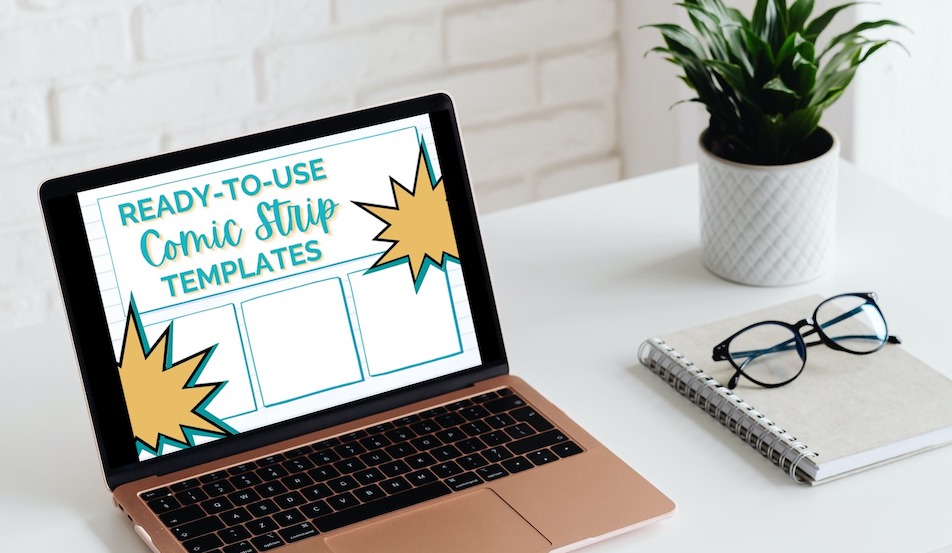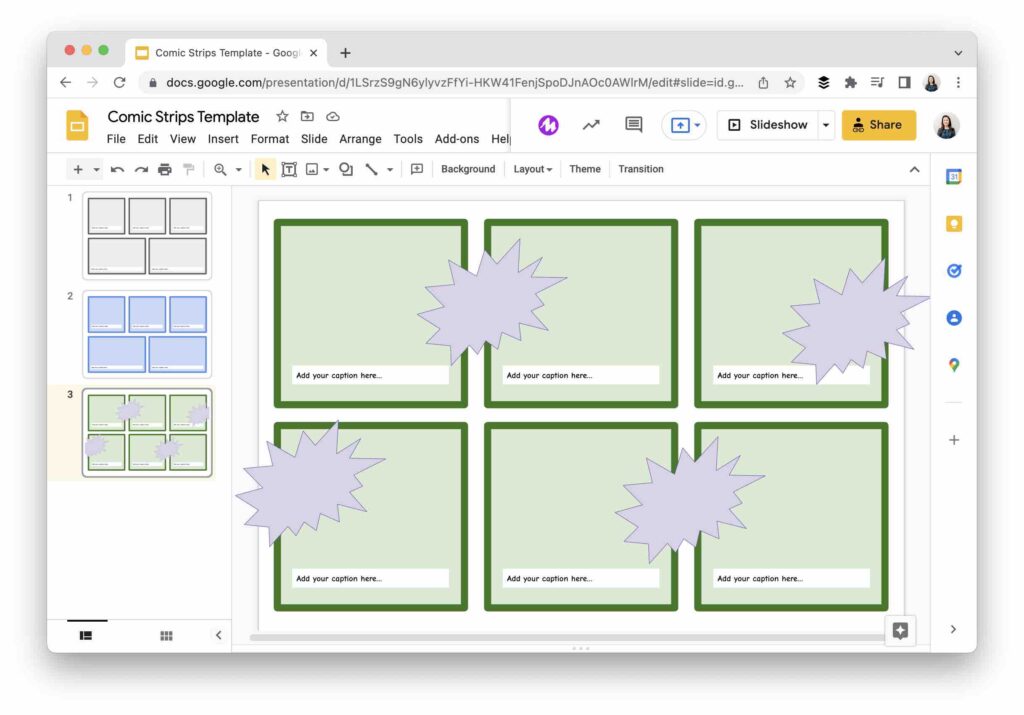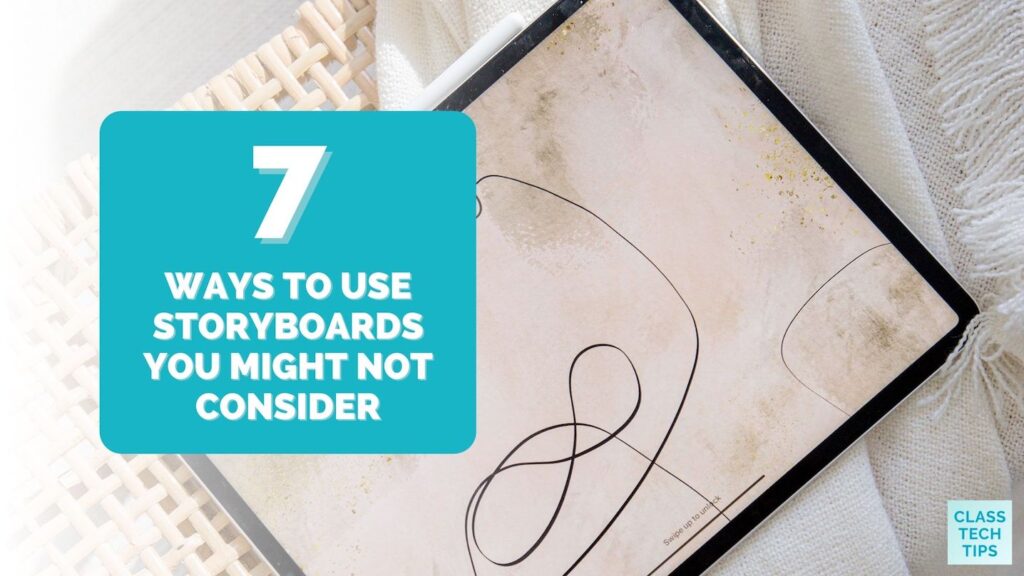Are you looking for new and creative ways to use storyboards in your classroom? If so, you’re in luck! In this post, we’ll share seven ways to get the most out of storyboards that you may not have considered. I’ve pulled together seven lesson ideas and storyboard examples for students. And I have a set of 15 templates you can use — perfect for storyboard lessons and creating comic strips — that I’ll link to below.
Before we dive into the list, what exactly is a storyboard? Storyboards are used to sequence and plan a story. It helps the author envision different parts of the story, usually combining images or sketches with text or notes. If we head straight to Merriam-Webster for the definition of storyboard, here’s what you’ll find: “panel or series of panels on which a set of sketches is arranged depicting consecutively the important changes of scene and action in a series of shots (as for a film, television show, or commercial).”
Simple Storyboard Ideas
There isn’t “one way” to use storyboards in the classroom. If you’ve used comic strips with students in the past, you might find that some of the same reasons apply to your decisions to try out a storyboard.
If you’re new to this idea or just diving in, here are a few ideas for storyboard lessons to get started. Who knows? You might just find a new favorite way to use storyboards in your classroom.
7 Lesson Ideas: Storyboard Examples for Students
Help plan your writing
Looking for storyboard examples for students? A common way to use storyboards is to plan a story or piece of narrative writing. Students can storyboard a story before they start writing. This can help them map out the plot of a story in sequence and get them thinking about who belongs where and when in a story or whether the setting changes as the story progresses.

Track character development
If you’re leading students in a novel study this year, you might have them storyboard as a way to monitor their progress through a long piece of text. When there are multiple chapters of a book, characters often evolve and change over time. Students can use a storyboard and fill in a box at the end of each chapter to show how a character did or didn’t change.
Map out the action of a current event
In a social studies or English Language Arts classroom, your students might read about current events. A storyboard could be a tool they use to identify crucial moments related to an event in their community or the larger world. You might ask students to work collaboratively with a partner to discuss and pinpoint these moments as they add them to their storyboard.
Download these comic strip templates for your next storyboard activity >>

Use as a brainstorming tool
I love graphic organizers of all kinds. If your students are brainstorming what steps to take to solve a math problem, how to tackle a science experiment, or anything that can be broken down into steps, a storyboard might come in handy. You can use a storyboard as a brainstorming tool that students revisit as they tackle a larger project.
Help students learn about careers
At the beginning of this post, the definition I shared might give you a few guesses at careers where storyboarding is common. For example, directors and cinematographers use storyboarding to prepare to film a movie or television show. App developers sketch out the user experience when they are creating new apps. If you want to help students explore different careers, you might make a storyboard connection.

Visioning and goal setting
If you try any goal-setting projects with students, you may want to add a storyboard spin to the project. How does this work? After students set their goal, ask them to create a storyboard. They can show what it will look like as they work towards the goal, accomplish the goal, and move forward into the future. You might have students revisit this storyboard periodically throughout the year or share it with an accountability partner.
Learning about each other
You might try out a storyboard activity to help students learn about their classmates. Or to learn about other members of a group they are a part of. Students can choose a series of important or notable moments from their lives and create a storyboard showing each event. Students can use their storyboard for a moviemaking project where they introduce themselves to their classmates.
Whether you’re looking for new ideas or just want to make sure you’re using storyboards to their fullest potential, I hope these storyboard lessons are ones you find helpful. And if you’re looking for some ready-to-use resources, I have you covered. Download these comic strip templates or use them as inspiration for your next project.







